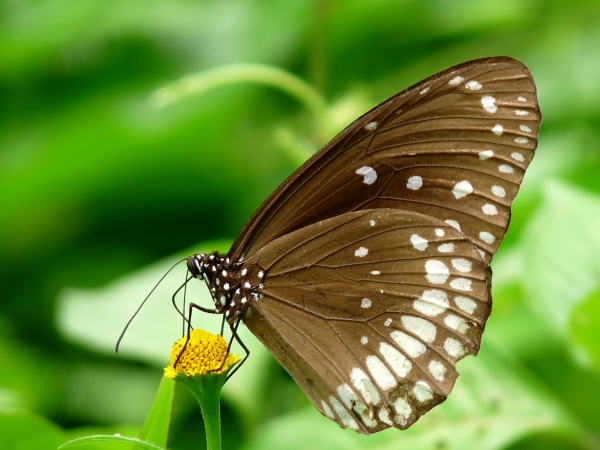Facts About Euploea core
The Euploea core, better known as the common crow butterfly, is a captivating species found from South Asia to Australia. In India, it's often referred to as the common Indian crow, while Australians simply call it the Australian crow. This butterfly belongs to the Danainae subfamily and is easily recognized by its glossy black wings adorned with rows of white spots along the edges. It exhibits a distinctive slow and steady flight pattern.
As caterpillars, these butterflies feed on plants containing toxins that they retain in their bodies, rendering them unappetizing to potential predators. The common crow is part of the Euploea genus, renowned for its inedibility, a trait that has led other butterflies to mimic the common crow through Batesian and Müllerian mimicry as a survival strategy.
The common crow is medium-sized, boasting a striking black and white coloration. It thrives in various habitats, from sea level to mountainous regions. Often seen gliding effortlessly through the air or sipping nectar from flowers, they are also known for engaging in mud-puddling—a behavior where they gather nutrients from moist soil. They collect pyrrolizidine alkaloids, crucial for producing pheromones during courtship.
The inedibility of the common crow provides it with natural protection, as predators quickly learn to avoid them due to their toxic payload. Their life cycle begins with eggs laid on host plants, proceeding to caterpillars with unique feeding habits and pupae occasionally preyed upon by parasitic flies.
The larvae of the common crow are not picky eaters, feeding on a variety of plants including dogbanes, milkweeds, figs, and nettles, depending on their region. The intriguing characteristics of this butterfly, such as its inedibility, mimicry tactics, and distinct behaviors, make it a fascinating subject for nature enthusiasts and scientists alike.
